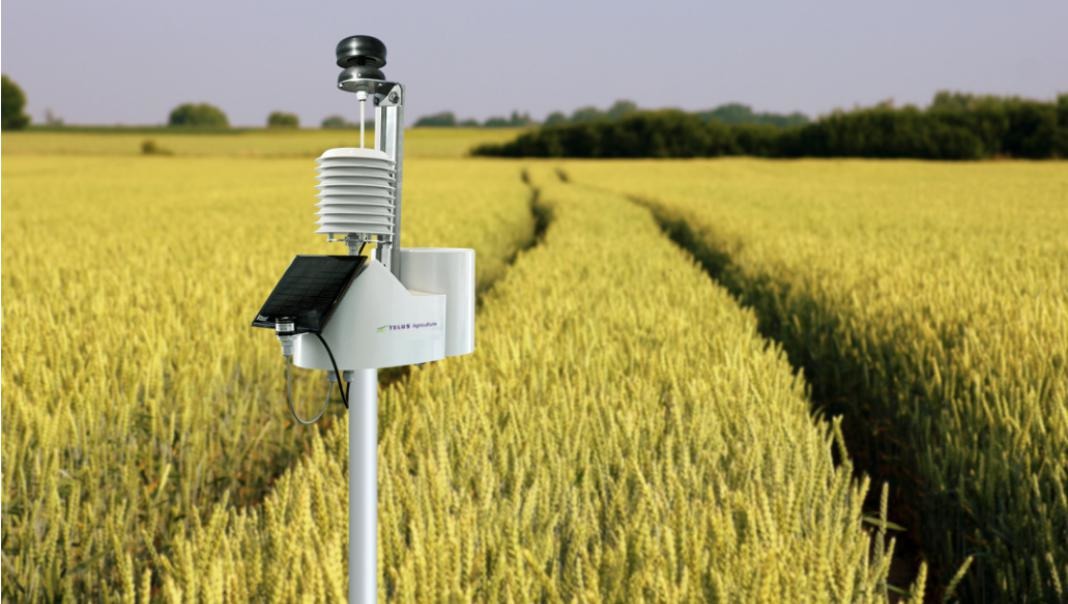Strengthen your Seeding Strategy
Friday, March 10, 2023
Reference: Decisive Farming

On-farm weather stations and soil moisture probes take the guesswork out of seeding plans and execution
As the 2023 seeding season is fast approaching, why not end the soil moisture guessing game on your farm? Especially when you have technology available to inform weather-related planning and crop management decisions. Precision crop management tools, including on-farm weather stations and soil moisture probes, allow for more accurate measurements that guide you to better manage your operation.
On-farm weather stations give you an accurate picture in real-time of the exact, localized environment and farm temperature across your fields rather than the climate conditions and weather possibly hundreds of kilometers away. Monitor the precipitation, humidity, wind speed, rain and frost conditions directly from your hand-held device to make informed planting and fieldwork decisions more quickly. Getting that seed off to the strongest start using precision agronomy and good weather planning is the best influence in achieving crop health and a profitable harvest later on.
Know your soil moisture and soil temperature to make stronger seeding decisions
Two of the biggest determinants to getting your seed germinated and off to a great start are: soil temperature and soil moisture. Where each should sit depends on the crop, the soil type in your region and other variables such as soil salinity. For instance, pulses tend to be sensitive to excess water whereas canola thrives in moist conditions and will not root without them. Planting it more deeply to reach moisture in the soil is only an option if the soil temperature is warm enough. This is why we look to our weather station’s real-time solutions, soil sensors, historical data and previous accurate weather on-farm trends to get those plants off to the best start.
Accurate weather forecasting and field level moisture sensor data can provide you with an accurate and detailed assessment of both your soil moisture and soil temperature in each field so you can select the best crop suited to the conditions as well as optimal timing to sow the crop.
Most spring-seeded crops require a soil temperature of at least 10 degrees Celsius for optimum germination and emergence – and it’s important to remember that water serves as an effective temperature regulator for your soil.
With that taken care of, you can then focus on the fact that moisture is the conduit that carries essential nutrients to the crop, driving both yield and quality come harvest time. Throughout the season, monitoring the weather using your weather station and soil moisture probes can help guide your management decisions around application timing, including fertility treatments and spray management, in the most efficient and timely way. As these technologies become increasingly affordable, the return on investment at harvest can make their adoption an easy choice.
Use your weather station and soil sensors to irrigate more efficiently
Understanding your farm weather conditions and soil moisture at the field level also means you may get the ideal amount of water to each crop at the best time. Up to 99 per cent of available water, through rainfall or irrigation, evaporates while as little as 0.2 per cent is used to form vegetative mass. This means that moisture needs for any given crop are highly dependent on both weather conditions and the crop’s growth stage. With that high rate of evaporation, irrigation timing becomes critical and should only take place when the crop can use it and the soil can effectively hold the moisture. When it comes to irrigation, taking accurate soil moisture measurements is essential to water conservation and efficiency, reducing irrigation costs and driving higher yields with better quality.
Adopting new technology on your farm is an important decision that can help deliver improved results. The data produced from real-time weather solutions may drastically up your understanding of what’s happening below the surface of your fields. It can help with your seeding, input and irrigation decisions for increased efficiency and greater economic advantages.
Sign up to stay connected
- News
- Property Alerts
- Save your favourite properties
- And more!
Joining Farm Marketer is free, easy and you can opt out at any time.
